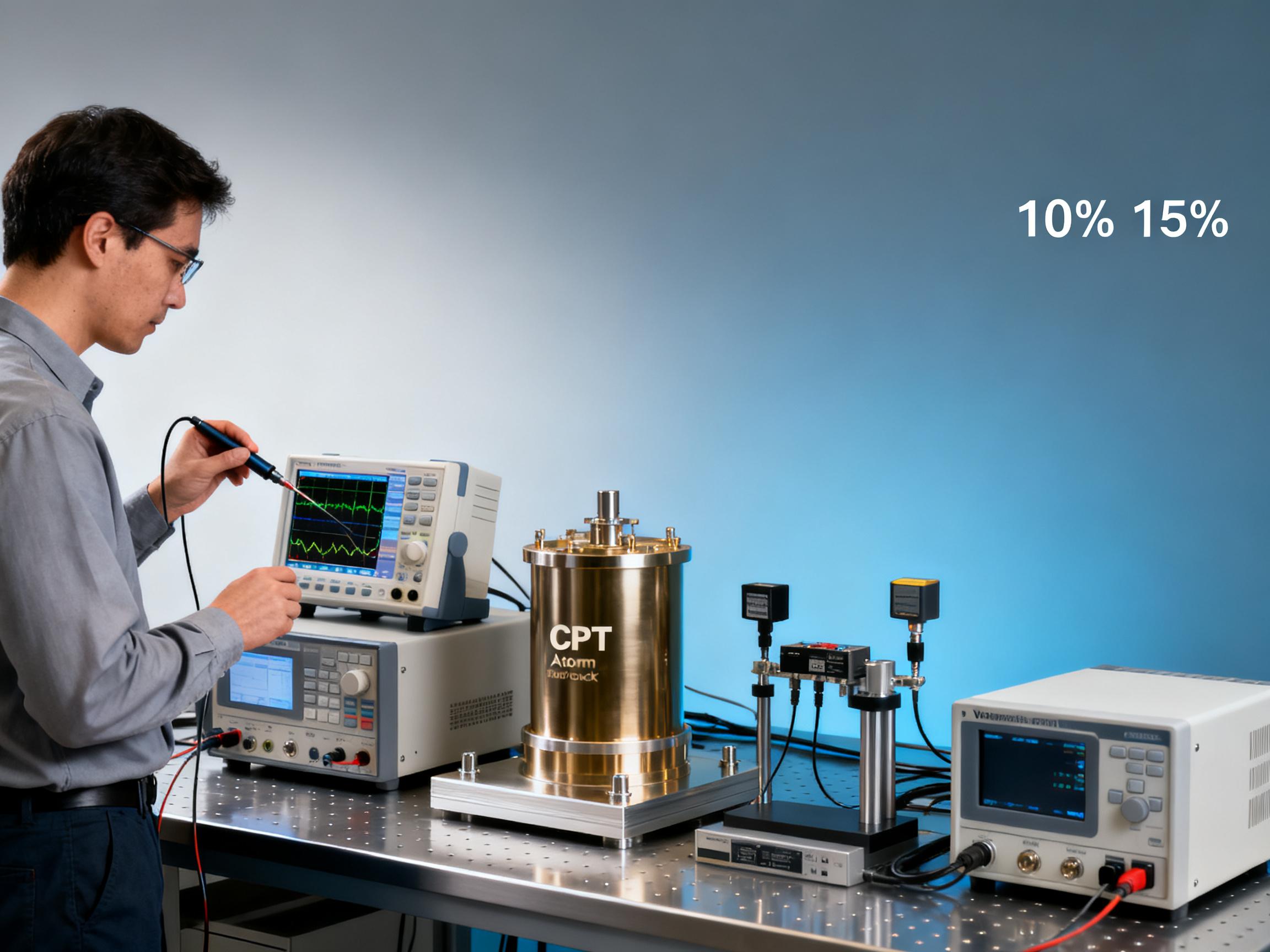RELATED
![How CPT Atomic Clocks Reduce OPEX in 5G Base Stations [Real Data] How CPT Atomic Clocks Reduce OPEX in 5G Base Stations [Real Data]](https://usimg.bjyyb.net/grey.png?x-oss-process=image/resize,m_fixed,w_800,h_600,limit_0) How CPT Atomic Clocks Reduce OPEX in 5G Base Stations [Real Data]2025-12-11
How CPT Atomic Clocks Reduce OPEX in 5G Base Stations [Real Data]2025-12-11 2024 CPT Atomic Clock vs Rubidium: Which Offers Better Stability for Telecom Networks?2025-12-08
2024 CPT Atomic Clock vs Rubidium: Which Offers Better Stability for Telecom Networks?2025-12-08 Live Demo Results: CPT Atomic Clock Performance Under Harsh Environmental Tests (Data Inside)2025-12-05
Live Demo Results: CPT Atomic Clock Performance Under Harsh Environmental Tests (Data Inside)2025-12-05 Budgeting for Precision: Total Cost of Ownership for a Rubidium Atomic Clock Over 5 Years2025-12-03
Budgeting for Precision: Total Cost of Ownership for a Rubidium Atomic Clock Over 5 Years2025-12-03
MESSAGE
Time-frequency analyzer is an instrument used to analyze the characteristics of signals in the time domain and frequency domain. It is widely used in many fields such as electronics, communications, aerospace, etc. The following is a detailed introduction to the time-frequency analyzer:
1. Working Principle:
The time-frequency analyzer mainly realizes the time-frequency analysis of signals based on mathematical methods such as Fourier transform and wavelet transform. For Fourier transform, it can convert time domain signals into frequency domain signals, and reveal the frequency components of the signal by calculating the amplitude and phase of the signal at different frequencies. However, Fourier transform can only give the overall frequency information of the signal, and cannot reflect the change of frequency over time. The wavelet transform makes up for this deficiency. By convolving the signal with wavelet functions of different scales, it can perform local analysis of the signal in two dimensions of time and frequency, thereby clearly showing the time-frequency characteristics of the signal, that is, the frequency composition of the signal at different times and the change law of the frequency component over time.
2. Main Functions
Ø Time-Frequency Display:
Displays the distribution of the signal in time and frequency in an intuitive way, such as through a time-frequency diagram, the horizontal axis represents time, the vertical axis represents frequency, and the color or grayscale represents the amplitude of the signal at the time-frequency point, so that the operator can clearly observe the time-frequency characteristics of the signal.
Ø Frequency Measurement:
Accurately measure the frequency value of the signal, including the fundamental frequency, harmonic frequency, etc., and can monitor the frequency changes in real time. For some signals with unstable frequencies, the time-frequency analyzer can accurately capture the drift and fluctuation of the frequency.
• Amplitude Analysis:
Analyze the amplitude of the signal at different frequencies to determine the energy distribution of the signal. Through amplitude analysis, strong and weak frequency components in the signal can be found, which helps to evaluate the quality and characteristics of the signal.
• Modulation Analysis:
For modulated signals, such as amplitude modulation (AM), frequency modulation (FM), phase modulation (PM), etc., the time-frequency analyzer can analyze its modulation parameters, such as modulation depth, modulation frequency, etc., so as to gain a deep understanding of the characteristics and performance of the modulated signal.
3. Application Fields
Ø Communication Field:
In the communication system, the time-frequency analyzer is used to analyze and test various communication signals, such as modulation mode identification of wireless communication signals, signal quality assessment, interference source location, etc. It can help engineers optimize the design of communication systems and improve the reliability and efficiency of communications.
Ø Aerospace field:
In the research and development and testing of aerospace equipment, the time-frequency analyzer is used to analyze radar signals, satellite communication signals, etc. to ensure the normal operation of the equipment and the accurate transmission of signals. For example, before the satellite is launched, the communication equipment on the satellite is subjected to time-frequency analysis to detect the stability and accuracy of the signal.
Ø Electronic Measurement Field:
It is used to measure and analyze various signals generated by electronic equipment, such as ripple analysis of power supply signals and frequency stability test of oscillator output signals. Through time-frequency analysis, problems in electronic equipment can be discovered in time, providing a basis for debugging and troubleshooting of equipment.
Ø Biomedical Field:
In biomedical signal processing, the time-frequency analyzer can be used to analyze bioelectric signals such as EEG signals and ECG signals, helping doctors understand changes in the physiological state of the human body and assisting in the diagnosis and treatment of diseases. For example, through the time-frequency analysis of EEG signals, abnormal EEG activity patterns during epileptic seizures can be detected.
4. Classification
Ø Analog Time-Frequency Analyzer:
Early time-frequency analyzers were mainly analog. They processed and analyzed signals through analog circuits. They had the advantages of good real-time performance, but had disadvantages such as low accuracy and limited functions.
Ø Digital Time-Frequency Analyzer:
With the development of digital signal processing technology, digital time-frequency analyzers have gradually become mainstream. It uses chips such as digital signal processors (DSPs) to digitize signals. It has the advantages of high accuracy, powerful functions, good flexibility, and can implement various complex time-frequency analysis algorithms.
Ø Real-Time Time-Frequency Analyzer:
It can perform time-frequency analysis on signals in real time. It is suitable for application scenarios with high real-time requirements, such as radar signal processing and communication signal monitoring. Real-time time-frequency analyzers usually use high-speed data acquisition and processing technology, which can analyze and process a large amount of signal data in a short time.
As an important signal analysis instrument, time-frequency analyzer plays an indispensable role in the field of modern science and technology. With the continuous development of technology, its performance and functions are also constantly improving and perfecting.
CONTACT US
Please use the form below to get in touch.
If you need a reply we will get in touch as soon as possible.

![How CPT Atomic Clocks Reduce OPEX in 5G Base Stations [Real Data] How CPT Atomic Clocks Reduce OPEX in 5G Base Stations [Real Data]](https://usimg.bjyyb.net/sites/91500/91958/1765179857856560163985903616.jpeg)



